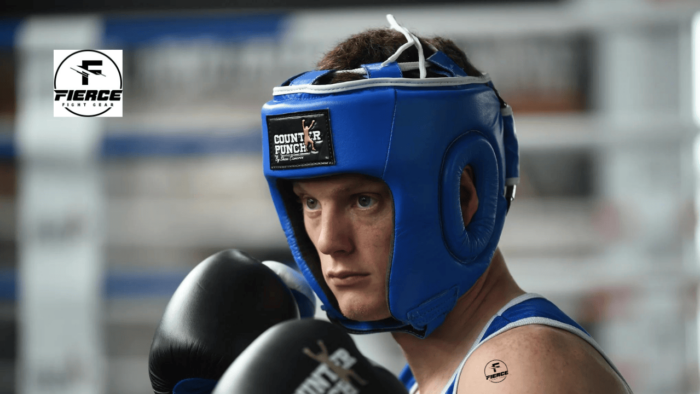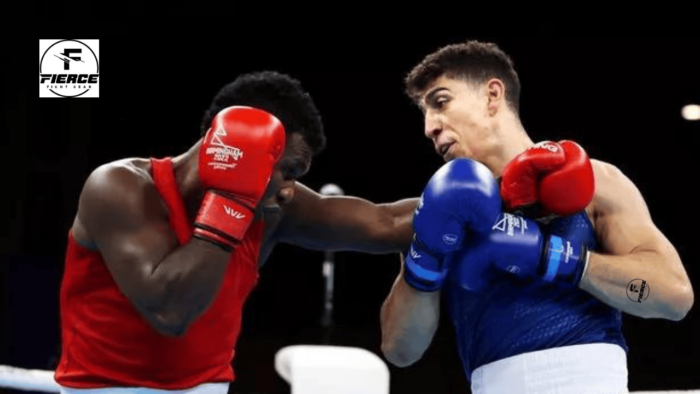Boxing head movement and techniques is that one thing every boxer needs to give their boxing career a boost. These movements help in avoiding punches easily and also provide effective defense. In this guide, we will break down the what, why, and how of boxing head movement, making it accessible whether you’re a beginner or a seasoned fighter. You’ll also learn how to improve your skills and become a more agile and effective boxer. Let’s get started.
Why Boxing Head Movement Matters
When it comes to boxing, head movement isn’t just an optional fancy move; it’s the backbone of effective defense and a crucial aspect of the sport. In this section, we’ll dive into why head movement matters so much in the world of boxing.
Defense is Your Best Offense
Imagine a boxing match where two fighters stand stationary, throwing punches at each other without any concern for defense. It would be chaotic, painful, and short-lived. Here’s where head movement comes to the rescue. By slipping, ducking, and weaving, a boxer can avoid punches from their opponent. This not only keeps them safe but also sets up opportunities for counter-attacks. So, head movement isn’t just about staying out of harm’s way; it’s a strategic tool that can turn the tide of a fight in your favor.
Reducing the Risk of Concussions
Boxing is a physical sport, and taking repeated blows to the head can lead to serious consequences, including concussions. Effective head movement significantly reduces the chances of getting hit flush on the head. When you make your opponent miss, you’re not only preserving your health but also maintaining your cognitive clarity throughout the fight. In the long run, this can be a game-changer for your boxing career and well-being.
Off-Balance Opponents are Vulnerable
Boxing isn’t just about punching; it’s about maintaining balance and control. When your opponent throws a punch and misses because you’ve smoothly slipped away, they often find themselves off-balance. This momentary vulnerability can be exploited with a well-timed counter-punch, putting you in control of the fight. Head movement, in essence, disrupts your opponent’s rhythm and creates opportunities for you to strike effectively.
Saving Energy and Endurance
Boxing matches can be grueling tests of stamina. Constantly blocking or taking punches can wear a fighter down, both physically and mentally. Effective head movement allows you to conserve energy by evading punches rather than absorbing them. This energy conservation can make a significant difference in the later rounds when fatigue sets in.
In summary, head movement in boxing isn’t just about making fights look more graceful; it’s about smart defense, preserving your health, seizing opportunities, and upsell conserving energy. As we move forward in this guide, we’ll delve deeper into the fundamentals of head movement and how to incorporate them into your boxing style.
READ ALSO: Exploring Different Types of Martial Arts: Top 10 Martial Arts Styles

Fundamentals of Boxing Head Movement
Mastering head movement begins with understanding the fundamentals and basic principles and they are:
Slipping
Slipping is one of the most fundamental aspects of head movement. It involves moving your head, usually in a downward and sideways motion, to evade an incoming punch. Think of it as gracefully “slipping” out of the way of danger. To practice this, start by standing in your boxing stance and gently lean your upper body to one side, allowing the punch to glide past your head. It’s a simple yet effective way to avoid getting hit.
Remember to have your head guard on during training sessions. Don’t have one? You can easily get a customized boxing head guard from Fierce Fight Gear today.
The Bob and Weave Technique
Bobbing and weaving is another essential skill in the head movement arsenal. Instead of moving just your head, you incorporate body movement as well. When an opponent’s punch comes your way, bend at the knees and waist to “bob” under the punch, then come up and “weave” to the other side. This dynamic movement confuses your opponent and makes it difficult for them to land clean shots.
Staying Relaxed and Balanced
One of the key principles of effective head movement is staying relaxed and balanced. Tensing up or overcommitting to a head movement can leave you vulnerable. Keep your movements fluid and your weight centered. Imagine you’re swaying with the rhythm of the fight, always ready to respond to any threat.
Eyes on the Prize
Your eyes play a crucial role in head movement. Keep them fixed on your opponent’s chest or shoulders, not their fists. This allows you to see the punches coming early and react accordingly. Remember, you can’t dodge what you can’t see, so maintaining good visual focus is essential.
Feinting and Baiting
Feinting and baiting are advanced techniques that involve using subtle movements and body language to deceive your opponent. By making it look like you’re going to move your head in a certain direction, you can trick your opponent into throwing a punch where you want them to. This opens up opportunities for counters and can frustrate your opponent’s game plan.
The Shoulder Roll
The shoulder roll, famously employed by Floyd Mayweather Jr., is a defensive technique that involves rolling your lead shoulder forward to protect your chin and deflect punches. This technique allows you to slip punches effortlessly while maintaining excellent counter-punching options. It’s a technique that requires precision and timing but can be highly effective when executed correctly. You can read more about the boxing shoulder roll here.
Pivoting and Angles
Pivoting and creating angles during a fight can be a game-changer. By pivoting on your lead foot and stepping to the side, you can create openings to attack or avoid punches. This advanced technique is all about controlling the ring and positioning yourself strategically to gain an advantage over your opponent.
The Pull Counter
The pull counter is a slick counter-punching technique that involves pulling your head back slightly to avoid an oncoming punch and then immediately countering with a punch of your own. It’s a move that requires excellent timing and reflexes, but when executed perfectly, it can catch your opponent off guard and result in a devastating counter.
There are some specific drills that can help you master these head movements and they are shown in the following section.
Practice Makes Perfect
Like any skill, head movement improves with practice. Incorporate slipping and bobbing and weaving into your training routines. Work with a trainer or a sparring partner to refine your technique. Consistent practice will help you develop the muscle memory necessary to execute these movements instinctively during a fight.
Combining Techniques
Remember that in boxing, versatility is key. Advanced head movement often involves combining different techniques seamlessly. For instance, you might use a slip to evade one punch, then pivot and roll your shoulder to avoid another, all while setting up your own counterpunch. The ability to mix and match these techniques is what sets elite fighters apart from the rest.
Remember that head movement techniques in boxing go beyond basic slips and weaves. Feinting, shoulder rolling, pivoting, the pull counter,elevate your defensive skills to a higher level. While these moves require practice and precision, they can be invaluable tools in your boxing arsenal, giving you the edge in the ring.
Do you know what else can give you an edge in the ring? Customized boxing wear!

Discover Fierce Fight Gear: Your Ultimate Source for Boxing Essentials
When it comes to boxing, having the right gear can make all the difference in the ring. At Fierce Fight Gear, we’re your premier destination for top-quality boxing essentials. From gloves and boxing shorts to jackets and more, our carefully selected range has got you covered. We stand out for our commitment to premium quality, customization options, and a paramount focus on safety, all while maintaining affordable prices. Whether you’re a seasoned fighter or just starting, our gear is designed to elevate your performance and ensure you step into the ring with confidence.
Design Your Unique Boxing Gear!
Frequently Asked Questions
What is head movement in boxing?
Head movement in boxing is the skill of dodging punches by moving your head strategically. It involves slipping, bobbing, and weaving to avoid getting hit while setting up counter-attacks.
How do you get the best head movement in boxing?
To improve your head movement:
- Practice regularly.
- Stay relaxed.
- Work with a coach.
- Use sparring.
- Watch skilled boxers.
- Maintain balance.
- Train your reflexes.
How do you practice boxing head movement alone?
You can practice head movement alone by:
- Shadowboxing in front of a mirror.
- Using a reflex ball on a headband.
- Practicing slipping under a horizontal rope.
- Focusing on footwork.
- Visualizing an opponent’s punches.
How do you defend your head in boxing?
To defend your head in boxing:
- Maintain a proper guard position.
- Use head movement (slipping, bobbing, weaving).
- Block punches with your arms.
- Parry punches to the side.
- Clinch in close quarters.
- Control distance from your opponent.
- Employ effective footwork to create angles.
